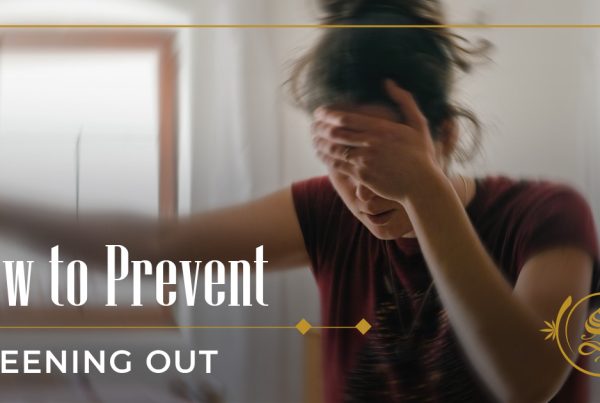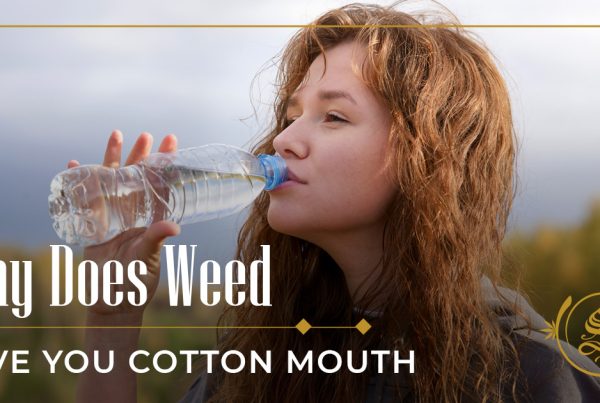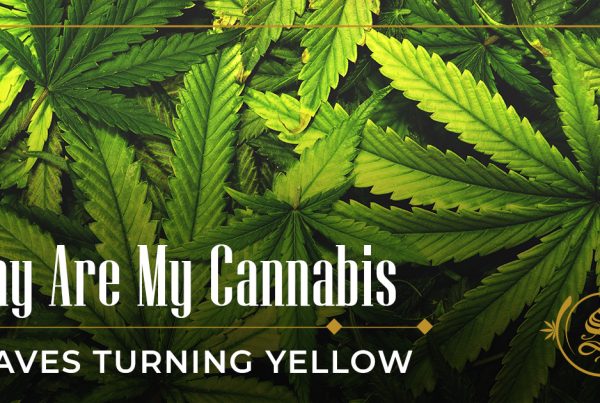In the United States, cannabis use is on the rise. American adults are increasingly using cannabis daily according to a 2018 study.
The entire weed industry is estimated to be worth $7.7 billion, according to Forbes. It is projected to hit $31.4 billion by 2021.
It all begins with the part of the plant called the flower. Also referred to as “bud,” this is the part of the weed plant that is actually smoked. A popular choice for its versatility, cannabis flower can be consumed in many different ways; including smoking it out of a bong or pipe, or it can be rolled into a joint or blunt.
The history of weed
Humans have an extensive history of cannabis use. As far as we can tell, it all started around 500 BC in Asia. In its infancy, many cultures grew cannabis for medicinal purposes as opposed to the psychoactive effects of being high. Dating back to the early colonists, America grew and used hemp for textiles and rope.
In the 20th century, political, racial, and economic factors led to the criminalization of cannabis in the United States. Nowadays, many weed laws are being overturned at the state level.
Originally evolved in Central Asia, the weed plant was eventually introduced to Europe, Africa, and the Americas. Hemp seeds were used as food and the fibers were used to make rope, paper, clothing, and sails for boats.
Why people smoke weed
Cannabis is indisputably one of the safest and most beneficial drugs out on the market today. It has tremendous versatility; a psychoactive drug for recreational users and a therapeutic drug for medicinal users. All over the world, people use cannabis because they believe it improves their quality of life.
Many anxiety medications come with negative side effects. Cannabis is being used as a safe alternative to such medications. A 2018 study published in the Journal of Affective Disorders demonstrates that short-period medical cannabis treatments using high-CBD and a lower THC ratio do wonders for diminishing anxiety in adults.
How old do you have to be to smoke weed?
Everywhere cannabis is legal recreationally in the U.S., the standard age to participate is 21 years of age or older.
In regards to medical users, you need to be at least 18 years old and with a valid medical cannabis license. For minors under 18, you may still be prescribed a medical license to use cannabis as long as you have permission from a doctor and a legal guardian.
What does being high feel like?
There are hundreds of compounds in cannabis. The two major compounds include cannabidiol (CBD) and delta-9-tetrahydrocannabinol (THC).
CBD is non-psychoactive and is the compound best attributed to the medicinal values in cannabis. THC is psychoactive, so when a person consumes THC they will feel the effects of “being high.” THC enters the bloodstream and from there travels to the brain where it attaches to cannabinoid receptors.
The calming effect of weed is a result of THC slowing down communication between the brain and the rest of the body.
The feeling of being high is often associated with the following effects:
- Relaxation
- Euphoria
- Laughter
- Enthusiasm
- Heightened sensitivity to color, touch, smell, light, taste, and sound
- Increased creativity
Over time the level of THC that is in your blood will vary. The levels peak while you are high, as the THC remains in your brain and blood until it is eventually passed through your digestive tract.
The effects that are felt on cannabis will change as the THC levels rise and then fall. The peak level of THC is when the effects of euphoria are felt. When the THC levels fall and the user begins to come down from the effects they may experience:
- Hunger
- Sleepiness
- Mild anxiety
Every person experiences different effects from the rise and fall of THC levels in their body. Some of the variables that can lead to these differences include:
- Method of consumption (joints, bong, edibles, tinctures, etc.)
- Weed strain
- Potency
- Dose
- Sex
- Age
- Metabolism
- THC tolerance
- Use of other drugs such as alcohol
How do I smoke a joint?
A joint is the easiest way to smoke weed. All you have to do is light one end and smoke out of the opposite end. Rolling up a joint may take some getting used to but in general, it is an easy thing to learn. All you need is some cannabis, papers, and a grinder. The grinder is not mandatory but is key to breaking up your buds into uniform pieces which are easier to roll up.
Rolling up a joint is also the cheapest way to smoke. Papers cost only a few dollars at most and last for a while. If you cannot roll a joint then find a friend to help you or go to a dispensary and buy a preroll. Eventually, you will want to learn to roll so that you can show off to your friends.
If you have mastered the art of joint rolling, consider giving the cross joint a try. It is the next level of smoking a joint and a fun thing for everyone to try at least once.
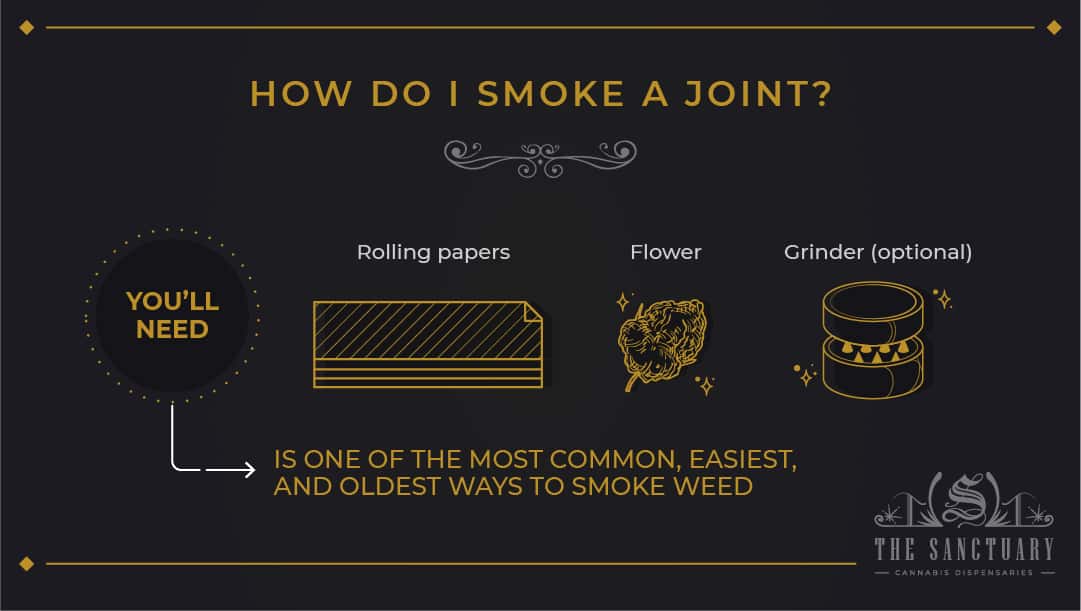
How do I smoke a blunt?
Using a blunt is as easy as using a joint as the same principles apply. A blunt is made using a cigar wrapper, or more commonly referred to as a cigarillo wrapper. These can be purchased at gas stations or liquor stores and may come either pre-filled with tobacco or empty. Like a joint, all you need to partake is some weed, the blunt wrap, and preferably a grinder.
The blunt paper itself is made from tobacco leaf so if you prefer not to smoke any tobacco products then perhaps stick with joints. Rolling a blunt may be either harder to roll than a joint or easier; it all depends on personal preference. Everyone has an opinion on which is easier to roll so give both of them a shot to see which is for you.
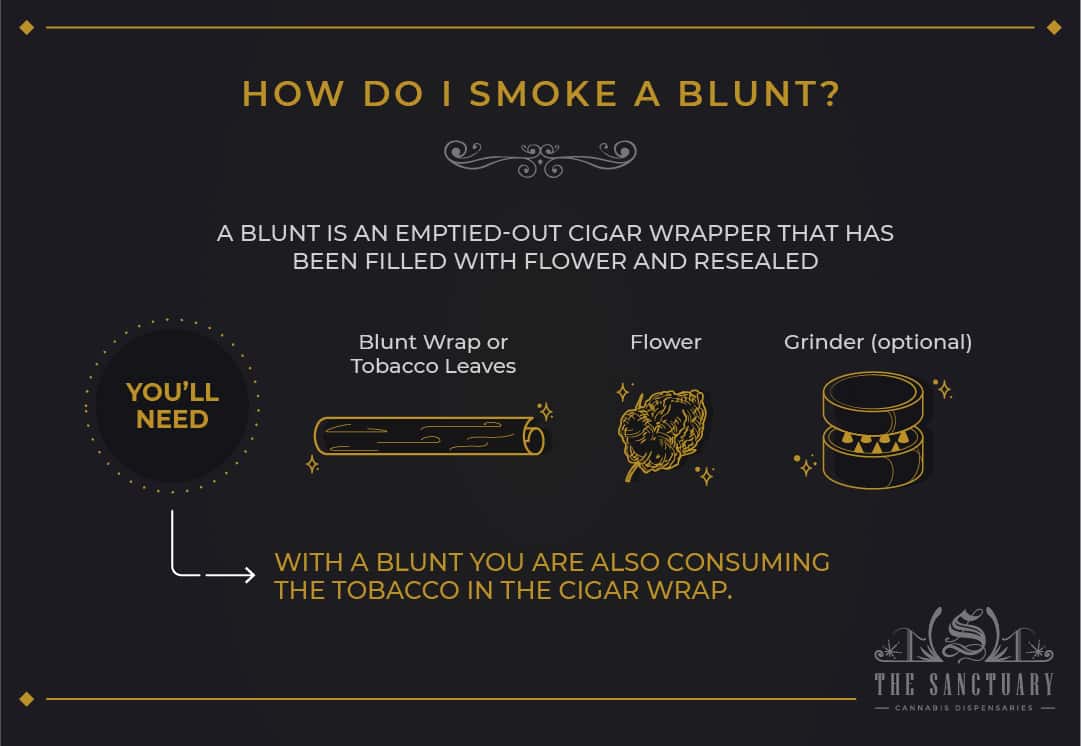
How do I smoke a pipe?
Some people call it a bowl, really it is a pipe with a bowl attached to a glass stem with a mouthpiece. These are handheld and depending on the size can be quite portable.
Smoking with a pipe is not too difficult but it does take a little getting used to. First, you pack your weed into the bowl. Second, hold it in your hand with the mouthpiece facing you while holding a finger over the hole on the side of the bowl (this is called a “carb” or “choke”).
Light the contents of your bowl while inhaling and covering the carb hole. When you are ready to inhale the smoke let go of the carb hole and the airflow will drag the smoke through the bowl and into your lungs. Again, not too tricky to do but it is still a slight learning curve.
Pipes come in all sorts of shapes, sizes, colors, and designs. Anything you could dream of has been made into a pipe somewhere. They come in many different materials as well. Most commonly they are glass but they can also be metal, silicone, or wood.
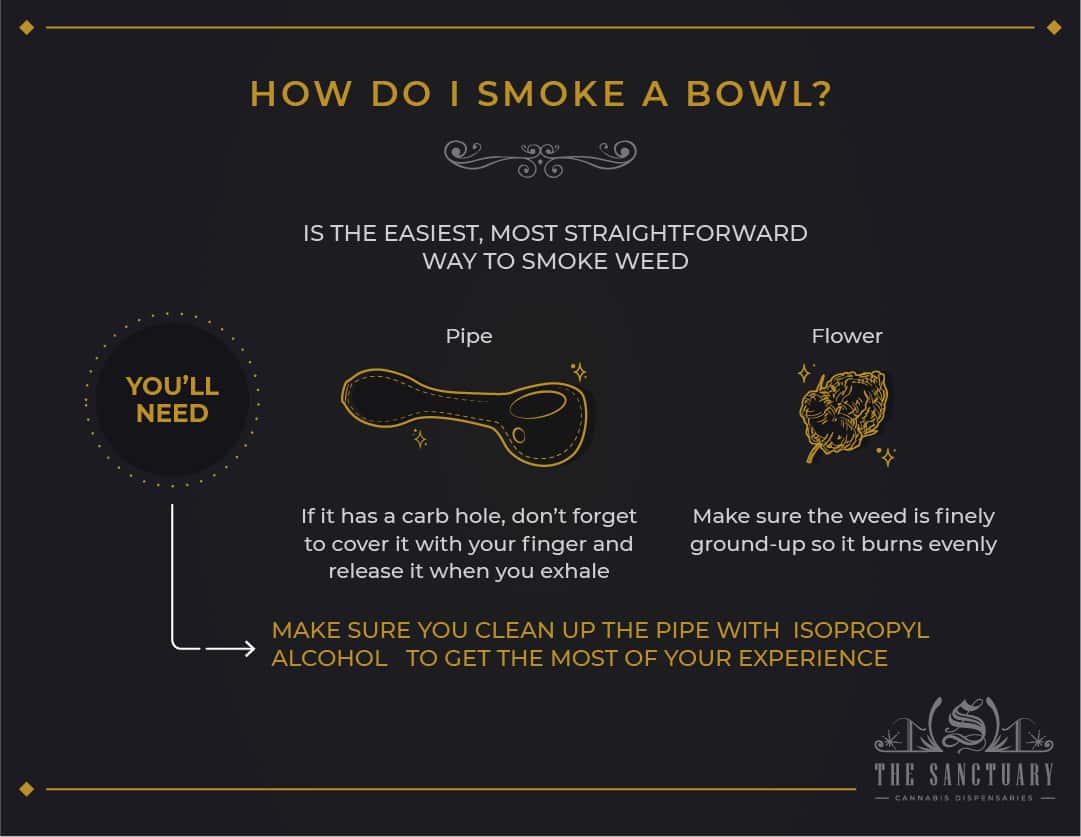
How do I smoke a bong?
After you have smoked from a pipe it is time to graduate up to a bong. Bongs provide bigger hits than pipes and the smoke is less harsh. This is because bongs have water in them to cool down the temperature of the smoke.
If you need a clue on how to smoke weed with a bong, then understand the basic principles are similar to that of a pipe. Light the contents of your bowl, but instead of releasing a carb hole, you pull the bowl out of the downstem which allows for the smoke to flow through the stem of the bong and into your lungs.
Cooling down the smoke is not the only perk of a water bong, it also filters out excess resin that otherwise would go in your lungs. So the hits are smooth and cleaner than with pipes.
A glass bong is most common, however, bongs can also be made using silicone, ceramic, metal, or plastic.
You can even make up a bong in your own home if you construct what is called a “gravity bong.” These are made using an empty two-liter soda bottle with the bottom cut out and a bowl mounted into the cap, as well as a larger container or bucket filled with water. The bottle is then submerged into the container of water right up to the neck of the bottle.
Begin lighting the bowl while slowly raising the bottle out of the water (do not pull the bottle completely out of the water or you will lose all of your smoke). This creates pressure that causes smoke to fill the bottle. When the chamber is filled or the bowl is ashed, the bowl should then be removed and the smoke inhaled through the opening at the top of the bottle. Push the bottle back into the water to push the built-up smoke into your lungs.
Bongs are not recommended for first-time users. This is because the hits are strong and sometimes harsh which is not a friendly way to be introduced to weed.
If you wish to try a smaller version of a bong then you are in luck. Try a bubbler, which is basically a combination of a pipe and a bong. They are not as big as bongs but they also utilize water filtration.
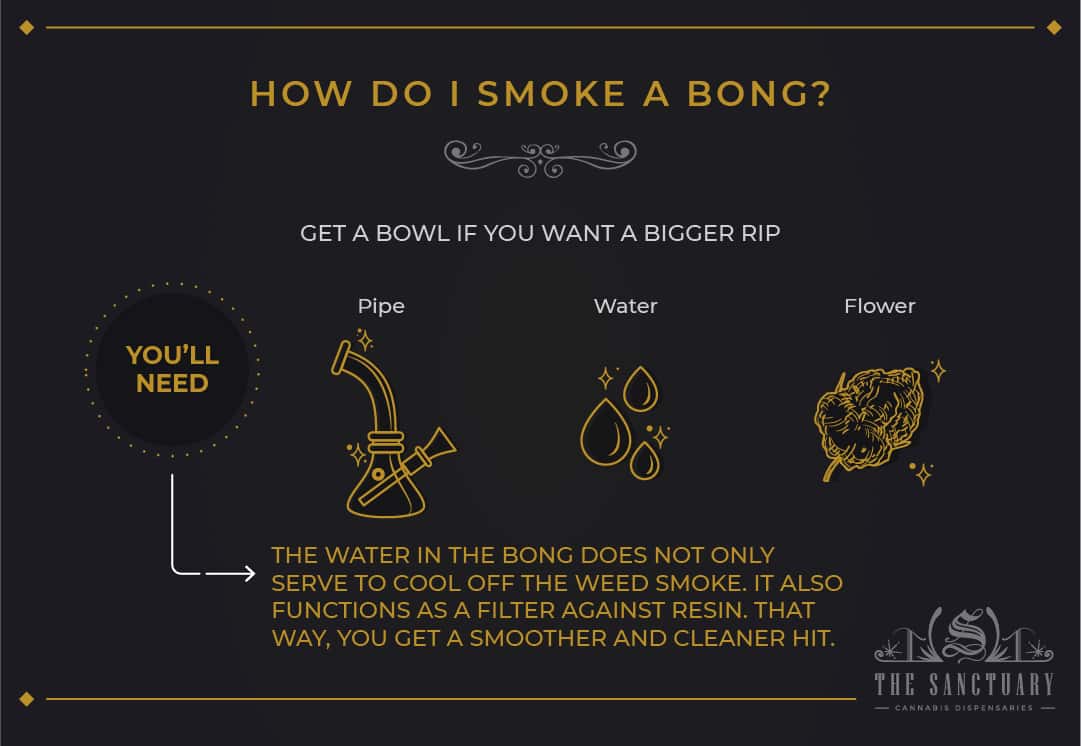
How do I smoke with a vaporizer?
Vaping is starting to take over the cannabis community. Using a vaporizer is considered the future way to smoke because it gives users the desired effects of being high without needing to inhale toxic smoke. Vaporizers produce vapor which is considered to be healthier, although research is rather limited.
Vaping cannabis involves heating either flower or concentrates to a specific temperature that activates THC without it scorching other beneficial properties such as terpenes. Vaping at lower temperatures also prevents combustion which means the user breathes in more cannabinoids and less harmful tar and carcinogens.
There are different types of vaporizers to choose from depending on personal need. You have tabletop vaporizers that are for at-home use and have the most control in regards to temperature. Then there are portable vaporizers and vape pens which are not as precise but are very portable and discreet.
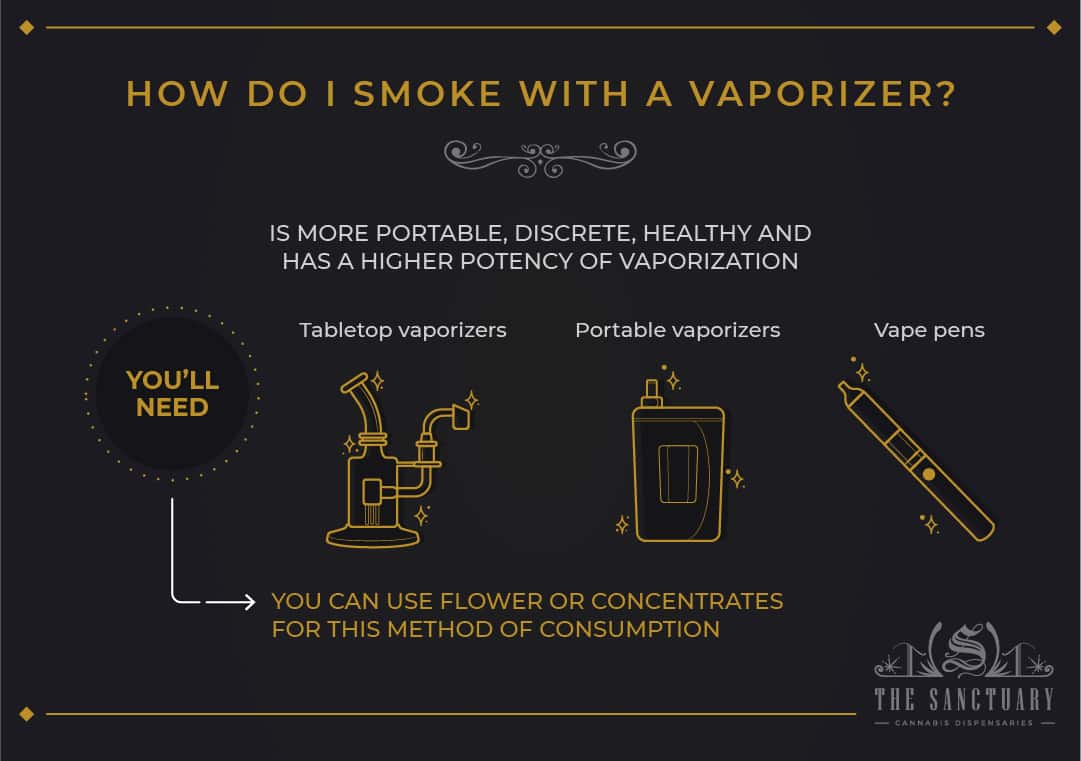
How do I smoke with an apple?
Yes, you read that correctly. It is very much possible to smoke from an apple and other types of produce as well. If you are at someone’s house without anything to smoke from then simply go raid the kitchen.
Making an apple pipe is easy and fun. To make one at home you will need:
- Cannabis
- Apple
- Poking tool (pen, small knife, key, or screwdriver)
The first step is to remove the stem; this divot in the top of the apple will serve as your bowl. Then take a pen or other poking tool and shove a hole into the middle of the apple through the removed stem. Next, carve out a mouthpiece by jamming that pen into the side of the apple. Keep pushing the pen until you go all the way through the apple. Make sure to line up this hole with the first hole made at the top.
After you have made your holes, breathe through them to make sure that airflow is not restricted.
One of these holes is your mouthpiece and the other one is your carb hole. Next, simply put weed in the top of the apple where the stem was. Cover one side hole with your finger and inhale through the other hole while you light the weed.
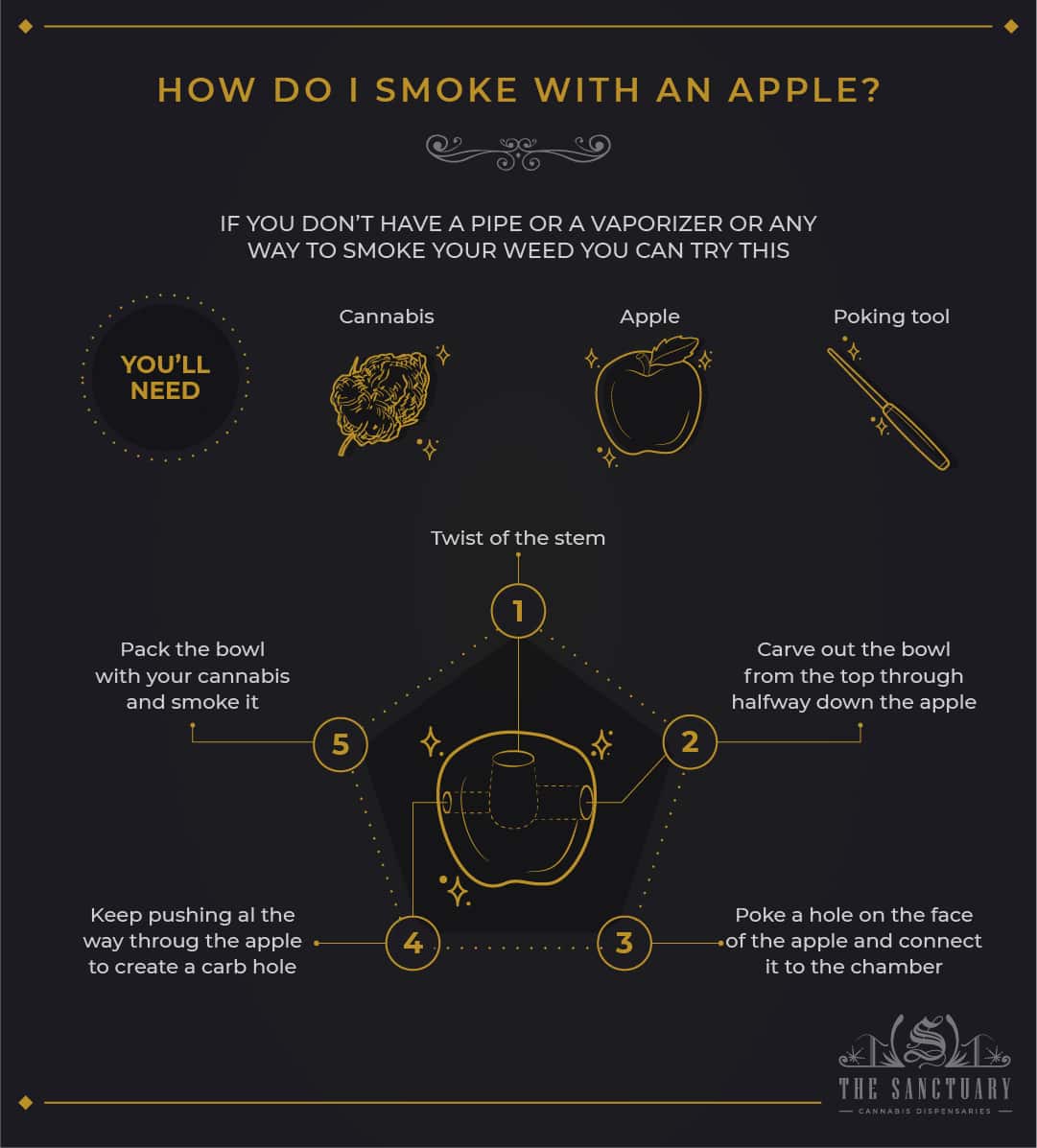
How long does it take weed to kick in?
Everyone’s physiology is different and so too is the time it takes for users to feel high. Many factors come into play such as dosage, tolerance, and metabolism. The method of consumption is the simplest way to determine how fast a high can kick in.
- Smoking or vaping flower: Within 2-10 minutes after smoking or vaping you can begin to feel the effects of being high. The onset time is so rapid because within minutes it enters your bloodstream via your lungs.
- Edibles: THC gets metabolized in the liver into a compound called 11-hydroxy-THC. This compound is more potent than THC, provides longer-lasting effects, and on the comedown of its effects can be very sedating. Edibles affect everyone differently because of these mechanics. It can take anywhere between 30 minutes and 2 hours to kick in.
- Concentrates: It takes about 2-10 minutes for concentrates to kick in. They have a high bioavailability, meaning the absorption of THC happens very quickly.
How long does a weed high last?
Much like determining the time it takes for weed to kick in, determining how long a weed high will last is equally difficult. Many different factors can play a role. The general expectations based on the method of use include:
- Smoking or Vaping Flower: The effects peak around 10 minutes after consumption and typically last 1 to 3 hours, though they can linger for up to 8 hours.
- Edibles: The effects of edibles usually peak around 1-2 hours after consumption and can last up to 24 hours.
- Concentrates: Similar to smoking flower, the effects of dabbing usually last 1 to 3 hours and potentially up to 8 hours. If using a high THC concentrate, you could feel the effects for an entire day.
Indica strain vs. Sativa strain
The term “strain” refers to the subspecies of the cannabis plant. There are three main strains of cannabis: indica, sativa, and a hybrid of the two.
In general, frequent users of cannabis believe that Cannabis indica strains produce a sensation of relaxation, while sativa strains produce more of the euphoric high, which is better for creativity and social interaction. A hybrid strain may cause both effects, to varying degrees.
However, according to an interview with Dr. Ethan Russo, an established expert on the human endocannabinoid system, there is no evidence to suggest that the different strains actually produce different effects.
Instead, he explained that the differences are based on how a person reacts to the individual plant and the number of terpenoids within the particular plant the person is using.
THC vs. CBD
CBD and THC are two of many different compounds present in cannabis. CBD and THC both interact with cannabinoid receptors, but only THC causes the high that people associate with recreational cannabis use.
CBD does not cause a high. Manufacturers often extract CBD from the cannabis plant for medicinal use. Healthcare professionals have used CBD to treat pain, anxiety, and several other medical conditions.
THC is present in the bud of the cannabis plant, which is why people tend to use these parts in recreational joints and edibles.
How to hide the smell of cannabis
The smell of weed is notoriously strong and unmistakable. This can be problematic for people for various reasons. A major reason being that cannabis is still illegal in a third of the United States. Another can be that they do not want to bother others or attract unnecessary attention.
If you store cannabis for the long-term, you will want to invest in good containers such as glass Mason jars. An air-tight container keeps the freshness in. It should isolate the fragrance from the outside world, too, which is especially important when you are transporting weed in your car. You have many options ranging from tightly sealed bags to Tupperware containers.
If you are trying to hide the smell while smoking, the first step you want to take is putting a towel down in front of the bottom of the door of the room you are in. Even grinding your weed, dabbing, and vaping is detectable on the other side of an untoweled door.
There are many other considerations when trying to hide the smell of weed.
How to sober up from weed
While smoking weed can be fun and therapeutic, it is also possible to take too much and become uncomfortable. Even experienced cannabis users sometimes consume too much cannabis.
Whether you were trying a new product, you were not paying close attention to your dose, or your normal dose was just too much for you on a particular day, being too high can happen randomly. Experienced users who have been too high before, usually can ride this feeling out. However, for newer users, this feeling can be very intimidating or even downright terrifying.
Symptoms for being too high include:
- Anxiety
- Paranoia
- Nausea
- Confusion
It is important to note that while this can be uncomfortable, it is not regarded as life-threatening. If you are too high you most certainly will not need a trip to the hospital. The best things to do is to relax, remind yourself that the feeling is temporary, and then distract yourself with activities.
There are also remedies to help you sober up, many of which are easy enough to do in the comfort of your own home.
How to make edibles
Edibles are favored in the cannabis community for their dosing ease, long-lasting effects, and, in some cases, extra strength. Edibles are cannabis-based food products. They come in many different forms, from sweets like gummies and brownies to savory dishes made with cannabis butter or oil. Edibles will contain one or both of marijuana’s active ingredients: THC and CBD.
Before you can start making edibles at home, you must perform an essential part of any edibles recipe: decarboxylating the weed.
Decarboxylating, or decarbing, weed is the process of using heat to convert the non-psychoactive THCA in raw cannabis into THC, the cannabinoid responsible for the feeling of being “high.”
There are lots of possibilities for decarbing weed so choose what works best for you or experiment with different methods. Baking is simple but other methods include slow cookers, or simply cooking weed in a high-fat material such as butter. Just remember that a lower temperature and a longer time frame (about 45 minutes in the oven) ensures optimal decarboxylation.
What if I do not get high?
Cannabis affects everyone differently. Like any other substance, some people may be more or less sensitive to cannabis than others. It all depends on your present internal body chemistry and genetics.
Some people do not get high from smoking weed. In fact, besides not inhaling, there are several big reasons that people who consume cannabis do not feel high. However, this in general, is not the average experience.
When you consume cannabis, THC enters the bloodstream and connects with special cell receptors called cannabinoid receptors. Thus far, researchers are aware of two distinct cannabinoid receptors, named CB1 and CB2. When THC connects with these receptors, specifically the CB1 receptor in the brain, it causes the classic psychoactive high.
Research suggests some people with certain medical conditions can actually feel more normal when they consume cannabis. It is not uncommon to hear people with fibromyalgia or post-traumatic stress disorder explain that cannabis gives them energy and makes them feel soberer.
How long can my weed last?
Cannabis does not spoil in the same way that food does. However, weed can degrade in quality and potency over time especially if it is not stored properly.
There are over 110 identified cannabinoids in marijuana, with THC and CBD the most abundant, followed by CBN. The cannabinoid composition varies depending on the strain. When your marijuana has been harvested, cut, and dried, its cannabinoid content begins to change over time because cannabinoids react to the presence of oxygen, light, and heat.
As weed grows, it produces cannabigerolic acid (CBGA) which is synthesized into CBCA, CBDA, and THCA. What is interesting is that the cannabinoids THC and CBD, for example, must be activated to take effect. Raw cannabis contains THCA which does not become THC until you apply heat to decarboxylate it.
Once you expose THC or THCA to UV light or the atmosphere for a long enough period, further changes will happen. Eventually, the compounds degrade to CBNA and CBN. To be clear, CBN (cannabinol) is not bad for you at all. However, it will not provide you with the psychoactive high you seek.
Pulling apart the flower should tell you everything you need to know about the condition of the weed. You can determine whether there is any moisture content or see if it falls apart in your hands. Herb that is well cured and dried will bend slightly and make a snapping sound when you handle it, whereas old cannabis is too brittle to bend and makes a dry cracking sound.
How much does weed cost?
The prices of cannabis depend in large part on the location you are purchasing from. Costs vary greatly from state by state and even city by city. The other major aspect of determining weed costs is quantity.
Cannabis is generally measured within the context of an ounce. Of course, you can purchase it in smaller increments, via a gram at a time, or you can purchase it in bulk. The more you buy the better price per gram deal you can get.
A single gram is enough weed for a few joints (depending on how you roll) or one small blunt.
“But how much does a gram cost?”
The price of a gram depends on several factors:
- Cannabis Quality: Naturally, more potent strains often fetch a higher price on the market. It is not uncommon for a high-THC strain to cost more than an average or low-THC product. Prices may be higher if the strain has been recently developed or was grown using organic practices as well.
- Taxes and Overhead: Dispensaries are businesses like any other. While cannabis has not been federally legalized, cannabis businesses are still subject to taxation and operational costs including facilities, utilities, payroll, administrative costs, and more. Taxes and the cost of living in your area can cause the cost of an eighth to be higher or lower than the average.
- Supply and Demand: Like other businesses, the cannabis industry is also subject to basic economic principles. If local growers suffer a bad crop or other unforeseen circumstances, the lack of supply can drive prices higher. If advances in growing technology improve, resulting in greater output with similar input costs, the increased supply can cause prices to decrease. Similarly, black market dealers may charge higher prices in an area without an abundance of other supply options, while illegal dealers in states that allow recreational cannabis may entice customers by setting their prices slightly lower than the average retail rate in the area.



